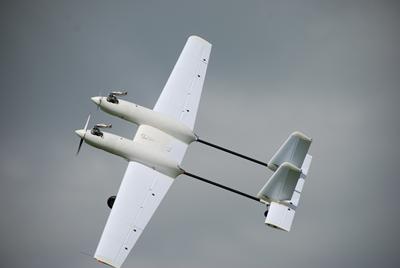Patrolling the seas, how UAVs can save time, money and lives

Southampton engineers, led by Professors Andy Keene and James Scanlan*, are exploring new ways of patrolling the coastline and saving lives at sea by using the latest unmanned air vehicles (UAVs), frequently known as drones.
Notes for editors
As part of the major European Union project INTERREG IV A 2SEAS Programme, they are working with Kent Police and colleagues in academia and industry in the Netherlands, Belgium and France to design, build and test a low cost marine surveillance aircraft for a range of tasks on both sides of the Channel.
In the near future, coastguards, port authorities, police forces and search and rescue teams could use cameras on board the remotely piloted aircraft to investigate reports of pollution and illegal activities as well as hunt for ships in trouble. UAVs are particularly useful as they can be deployed to monitor difficult and dangerous situations such as fires onboard ships without putting lives at risk.
The aircraft could take photographs and video footage of incidents and analyse air samples before transmitting data to the ground. Developed at Southampton using efficient 3D printing technology, and carbon fibre composites, the strong yet lightweight plane can fly at more than 100 km/h and stay in the air for several hours. A new magazine tells the story of the 2SEAS project, explains the different roles of its partners in the collaboration and outlines the rich potential for the UAVs in ports such as Dover, Rotterdam and Dunkerque.
Ivo Opstelten, the Dutch Minister of Security and Justice says: “Sharing knowledge and experience about the use of drones to solve security issues at sea will undoubtedly lead to a better, more accurate, response. Additionally, the methods developed will trigger new ideas and solutions that will improve the life saving activities of our emergency services.”
Southampton engineers have taken part in two 2SEAS programmes. The first 3i ended in September 2014, the second BERISUAS will run until September 2015.
*Other members of the design team include Mario Ferraro, Andrew Lock, Mantas Brazinskas and Mehmet Erbil.
http://blog.soton.ac.uk/robotics/2seas-project/
Watch a video about the project